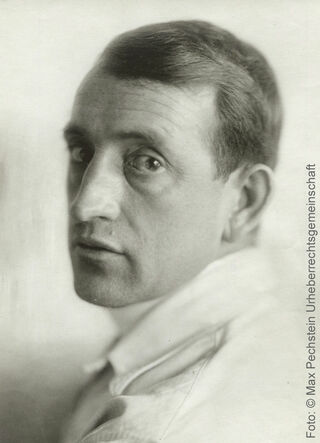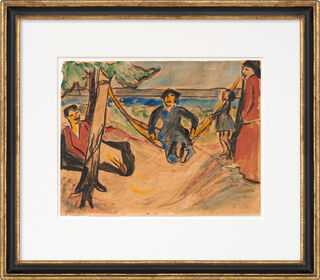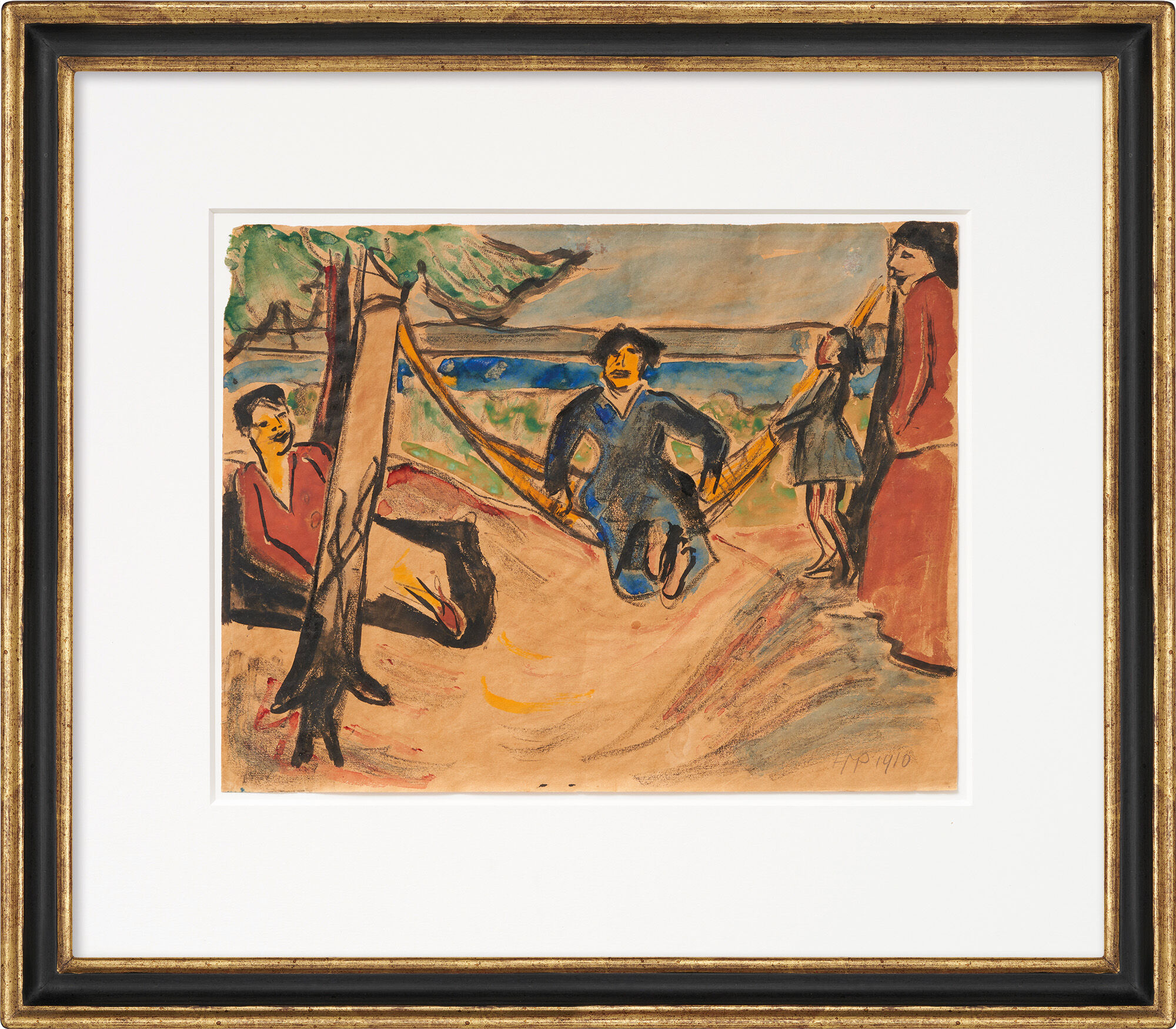Picture "In a Hammock VI" (1910) (Unique piece)


Picture "In a Hammock VI" (1910) (Unique piece)
Quick info
unique piece | monogrammed | dated | mixed media on paper | framed | size 55 x 64 cm
Video
Detailed description
Picture "In a Hammock VI" (1910) (Unique piece)
This richly coloured watercolour drawing on paper from 1910 dates from Max Pechstein's period as a member of the "Brücke" and is of museum quality. When Pechstein moved to Berlin in 1908, Erich Heckel and Ernst Ludwig Kirchner visited him there. They made plans to work together at the Moritzburg Lakes near Dresden. During these excursions, Pechstein created numerous works that can be found in important collections today.
Working in close proximity to the other two artists brought their respective styles closer and closer together. The artists' works created during their time in Moritzburg were thus able to reach a whole new level: The imagery later referred to as the "Brücke" style manifested itself and formed the culmination of their years together.
"We painters set off early in the morning heavily packed, the models trailing behind with bags full of food and drink," Pechstein later recalled. "We lived in absolute harmony, working and bathing. If we were short of a male model, one of us would step into the breach." This sense of freedom and idyll is also evident in the present work.
Watercolour, ink and charcoal on paper, 1910. Monogrammed and dated. Motif size/sheet size 33.5 x 43.3 cm. Size in frame 55 x 64 cm as shown.

About Max Pechstein
1881-1955
Max Pechstein is considered today, as he was then, one of the most important representatives of German Expressionism. In spring 1906, he joined the artists' group "Die Brücke", which had been founded the previous year by Kirchner, Heckel, Schmidt-Rottluff and Bleyl. In the field of graphic art, he produced an oeuvre of over 850 woodcuts, lithographs and etchings in addition to his paintings.
What Tahiti was to Paul Gauguin, the Baltic Sea coast was to Max Pechstein: a paradise where he found peace, but above all great inspiration. From 1909 onwards, he travelled several times to Nidden on the Curonian Spit, where Lovis Corinth had worked as a young art student more than a quarter of a century earlier. However, when the Treaty of Versailles placed the Curonian Spit under Allied administration in 1920, the way there was blocked. In his own words, Pechstein had to "once again go in search of a spot of earth that was not overrun by painters, tourists and bathers". He found it in Leba, where from then on he spent his summers on a regular basis.
"For more than twenty years Max Pechstein went to the Baltic coast every summer, first to the Curonian Spit, then to Pomerania, which naturally connected him closely to our house. When he rented a room here with his first wife in 1921, he had no idea how attached he would soon feel to the small harbour town of Leba, for he fell in love with Marta Möller, the daughter of his innkeeper. The pristine nature with its beach lakes and the fishing boats in the harbour, the pipe in his mouth, tanned and the anchor tattooed, those things stayed with the passionate angler Pechstein until the end of his life, even when he and his wife could no longer go to Pomerania after the Second World War." (Dr. Birte Frenssen, Deputy Director at the Pomeranian State Museum in Greifswald)
Depiction of typical scenes from daily life in painting, whereby a distinction can be made between peasant, bourgeois and courtly genres.
The genre reached its peak and immense popularity in Dutch paintings of the 17th century. In the 18th century, especially in France, the courtly-galant painting became prominent while in Germany the bourgeois character was emphasised.
Graphic artwork in the making of which the artist combines at least two graphic techniques.
A one-of-a-kind or unique piece is a work of art that has been personally created by the artist. It exists only once due to the type of production (oil painting, watercolours, drawing, etc.).
In addition to the classic unique pieces, there exist the so-called "serial unique pieces". They present a series of works with the same colour, motif and technique, manually prepared by the same artist. The serial unique pieces are rooted in "serial art", a type of modern art, that aims to create an aesthetic effect through series, repetitions and variations of the same objects or themes or a system of constant and variable elements or principles.
In the history of arts, the starting point of this trend was the work "Les Meules" (1890/1891) by Claude Monet, in which for the first time a series was created that went beyond a mere group of works. The other artists, who addressed to the serial art, include Claude Monet, Piet Mondrian and above all Gerhard Richter.


